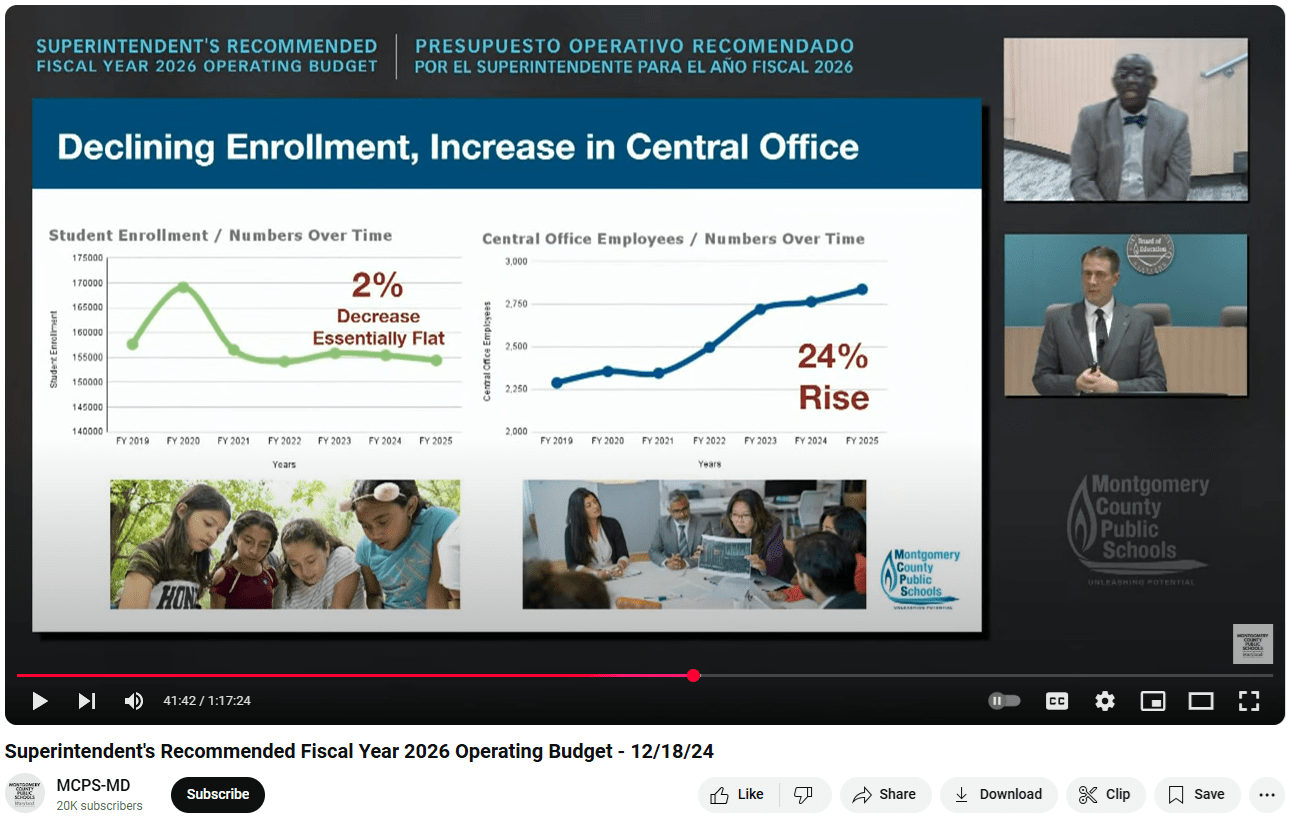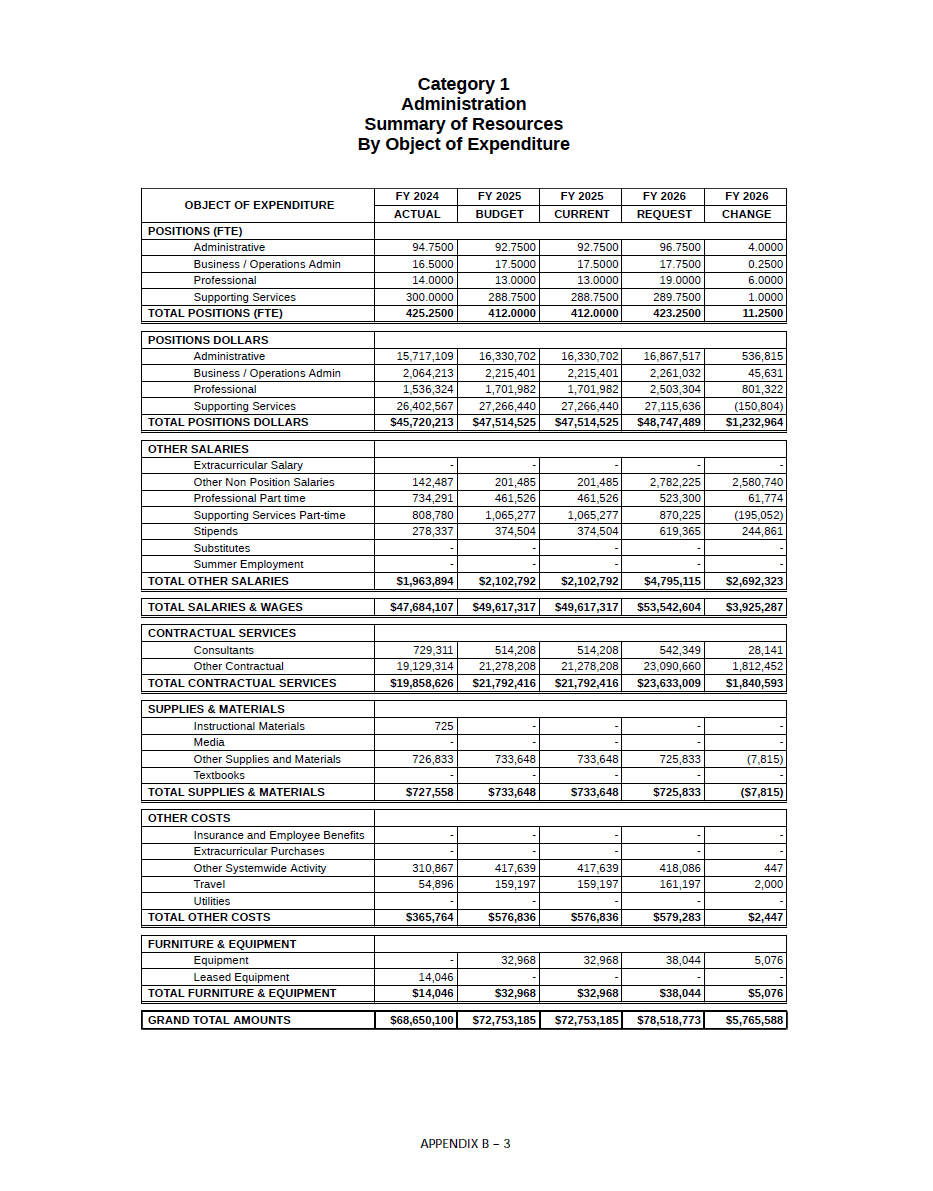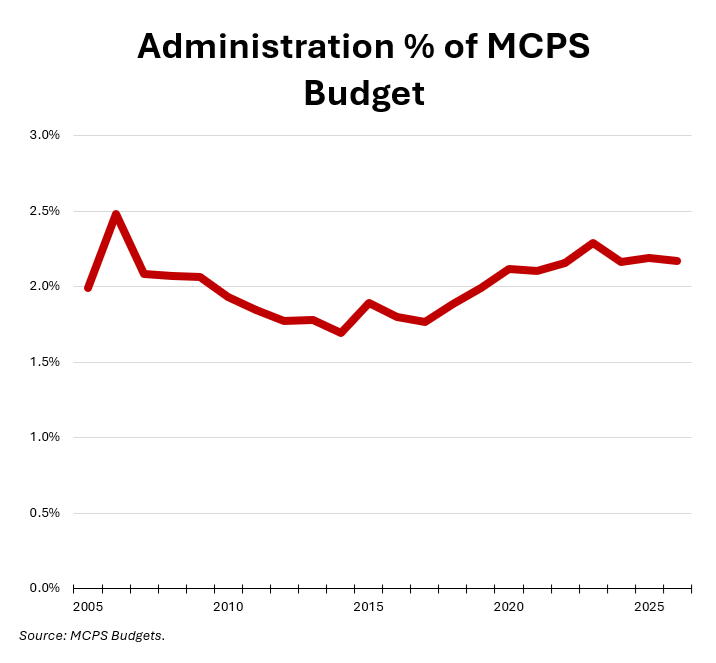By Adam Pagnucco.
Part One outlined the largest increases in Superintendent Thomas Taylor’s recommended FY26 operating budget. Part Two examined fixed charges (employee benefits). Part Three looked at special education. Part Four looked at textbooks and instructional supplies. Part Five discussed maintenance of plant. Part Six examined compensation. Now let’s look at the central office.
In a previous post, I related how Taylor criticized the central office in his budget presentation and vowed to cut it. In doing so, Taylor used the slide below to argue that the central office had grown by 24% while enrollment had remained essentially flat. His operating budget contained language claiming that it was implementing reductions to the central office “totaling 81.5 FTE and $7,014,967.”

How is Taylor defining the term “central office?” The Financial Reporting Manual for Maryland Public Schools does not contain an expenditure category with that name. It does refer to category 1 – administration – which it defines in this way.
Administration includes the activities associated with the general regulations, direction, and control of the LEA [local education agency]. Such activities as establishing and administering LEA operating policy, providing fiscal and internal services necessary for operating the LEA, supporting each of the other instructional and supporting services programs, and assisting the instructional staff with the content and process of providing learning experiences for students are included in Administration. Administrative expenditures affect the LEA as a whole and are not confined to a single school building.
The schedule below from Taylor’s budget shows what he is recommending for category 1 (administration): an increase of 11.25 full-time equivalent (FTE) positions and an increase of $5.8 million, or 7.9%. If category 1 is tantamount to the central office, Taylor isn’t cutting it. He is expanding it.

The chart below shows the percentage of the MCPS operating budget going to administration since FY05. Taylor’s administration share (2.2%) is about the same as the average of the two decades before he arrived (2.0%). This does not look like a historic reorganization.

However, it’s apparent that Taylor’s definition of central office does not match administration. Category 1 contains 423.25 FTEs in Taylor’s budget. In his budget presentation, Taylor estimates the size of the central office at more than 2,800 employees. So he is including a lot of functions outside administration that are not specifically defined in his budget.
Taylor’s budget speadsheet refers to Exhibit 2 when discussing his “central services reorganization (reduction).” At this writing (February 6), here is what that exhibit looks like.

Both of the organizational charts linked by the exhibit contain notes conceding that they do not include every office or unit in them. And the exhibit that “will be released on January 31, 2025” does not appear here a week later.
Come on now!
So is Taylor really cutting the central office? I can’t answer that question without knowing exactly how he defines that term. His budget shows that he is expanding the very top of the organization through category 1 (administration).
Taylor is a great salesman. It’s a good pitch to defend a historically huge budget ask by vowing to cut down central bureaucracy. But if he intends to make an argument that he is genuinely doing that, he needs to do better than this.
